- en
Your cat has fleas! Now what?
This pet information prescription will help you know what to do, how to make your cat more comfortable, and how to prevent this from happening in the future.
Although over-the-counter (OTC) flea treatments do an okay job, they’re missing some important benefits of prescription (Rx) medications and those available only from veterinarians. OTC flea and tick treatments can fall short and be less safe.
Quick Links
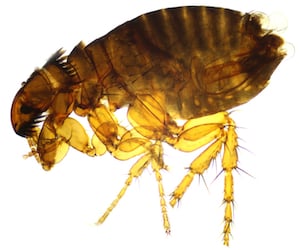
10 fleas can turn into 250,000 in just 30 days! They're a nuisance for your cat, and they can spread disease to people.
Our mission is to help save dogs' and cats’ lives through our educational content. To support our efforts, this page may contain affiliate links. We earn a commission for qualifying purchases – at no cost to you.
Fleas are pesky parasites that are a nuisance for pets and their families. Fleas are non-flying insects that survive by eating blood from mammals and birds, and they are very difficult to get rid of from pets and from your home. These insects love to hang out on cats and dogs, where they can easily feed off them any time they are hungry. Fleas are designed with spikes around their head and their mouth, allowing them to pierce through animal skin easily in order to take a blood meal. This flea bite will leave your cat feeling itchy and uncomfortable, and in some cases, the itchiness can develop into sores, rash, or a secondary infection. If you suspect your cat may have fleas, it is important to check your other pets, yourself, and your belongings. Although fleas can’t fly, they can jump approximately 1 foot into the air and can jump from one cat to another animal or onto you. What’s worse, if you see a single flea, you likely already have an epidemic of fleas in your home. One female flea can give birth to close to 500 eggs in her short lifespan.

Your cat could've gotten fleas:
If you see your cat itching and suspect they may have fleas, use a fine-tooth comb (do not use it for personal use in the future) to go through your cat’s hair. You will be looking for small black or brown bugs moving about. Fleas love to hang out around a cat’s neck, the base of the ears, and at the top of the tail. If you don’t see any moving bugs, but you see little black crust, you still have a flea problem on your hands. The black debris you are seeing is called “flea dirt,” and it is the fecal matter excreted by fleas onto their host. To be sure you are seeing flea dirt, you can put the black flecks on a paper towel and moisten it with a little water. If the flecks turn red, you have indeed found flea dirt. The flea dirt turns red when moistened because it is mostly undigested blood from a blood meal taken from your cat. Once you have confirmed that your cat has fleas or flea dirt, it is time to contact your veterinarian.
Unfortunately, fleas aren’t just a problem for your cat. While the fleas may prefer your cat, they can still bite people (and other pets in your home). Fleas can cause your cat to be incredibly itchy and cause them to be irritable and uncomfortable. If the fleas bite you, you can develop a rash and itch as well.
More importantly, fleas can also carry several diseases that can affect your cat AND your family. For humans, while rare, a flea bite can transmit, typhus, cat scratch fever, and even bubonic plague in some parts of the US. For cats, flea bites can transmit cat scratch fever. Then if the cat scratches or bites a human, they can then become infected with the bacteria. Pets and children that live in homes with fleas can accidentally ingest them, resulting in tapeworms as well.
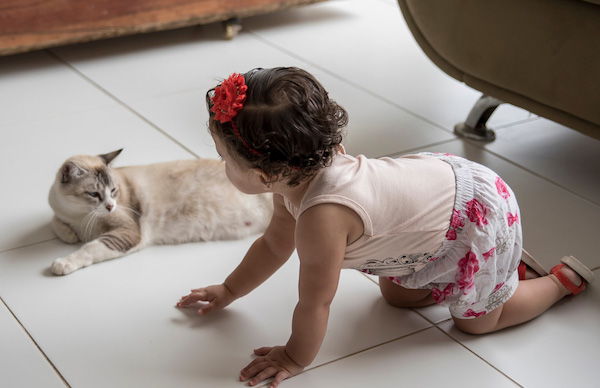
Your veterinarian will have given your cat an oral or topical flea treatment to kill any fleas on them and prevent them from jumping back on for a while – usually, 30–90 days, depending on the product.
It’s important to treat ALL the pets in your home in order to fully remove them and prevent any other pets from becoming a target –starting the cycle all over again. All pets should be treated for three consecutive months – although year-round prevention is ideal. This will help prevent any flea eggs (larvae) in your furniture, the carpet, or outside from growing up and taking hold of your pets.
You may also need to have your cat bathed if they are heavily infested. Bathing a cat, especially one that isn't used to it, can be difficult and potentially dangerous if they react aggressively. If you or your cat aren't comfortable with the bathing process at home, contact an experienced cat groomer. You'll need to tell them your cat has been treated for fleas so that they can take the necessary precautions to not cause any transmission to other animals in their care.
Do not bathe your cat within 72 hours of applying a topical flea treatment, as the water can reduce the efficacy of the medication.
Warning! If you have a dog, do not use your dog's flea medication on any of your cats. Dog flea parasiticide treatments can be very poisonous for cats.
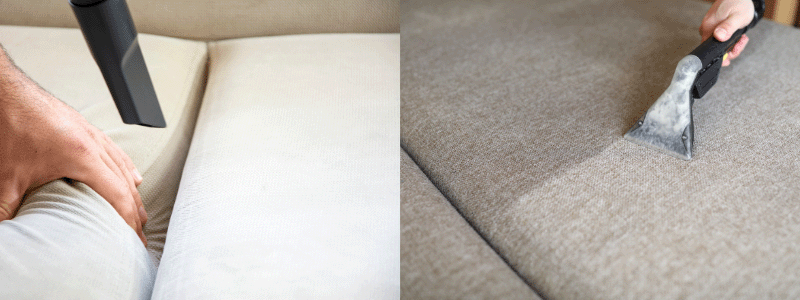
The best thing you can do is to use the flea treatment and additional itching medications prescribed by your veterinarian.
Depending on your cat, bathing can be beneficial. You do not want to bathe your cat until 72 hours after applying the flea treatment if you used a topical medication. Bathing is beneficial because it removes flea dirt and bacteria. It also can soothe their skin.
Cats can be destructive to their skin when they are itchy. So you will want to give any medications for itching prescribed by your veterinarian. Additionally, it may be necessary to put on an Elizabethan collar to prevent them from aggressively chewing and scratching themselves.
Keeping your cat in a room with a cool-mist humidifier will also help soothe itchy skin.
Brushing your cat may also help them feel better and settle their itch.
Using Feliway® diffusers or VetriScience® Composure treats may help calm your cat's anxiety and discomfort. Your veterinarian can also give you other recommendations to help calm your cat.
Providing toys and playing together for added distraction may be beneficial as well as comforting.
Granted, it will take a little bit of time to take effect, but if your veterinarian approves, you can start your cat on fish oil.
Your cat should be scratching less, their skin should be healing, and overall they should feel more comfortable. You should no longer see any live fleas after 2–3 days.
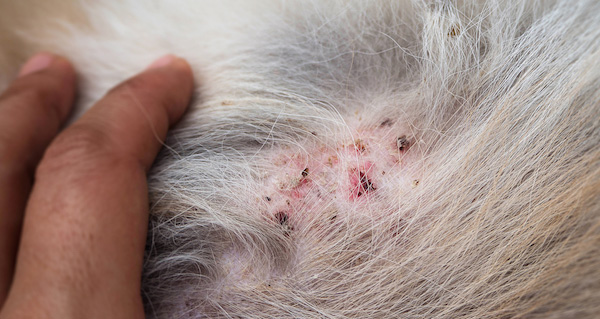
If your cat is still scratching a lot after 2–3 days, you may need to talk to your veterinarian. Sometimes cats need additional medication for itching to ease their discomfort.
If you still see live fleas in your home or on your cat after treatment, make sure that all pets were treated. You may need to start decontaminating your home by washing everything really well, and in extreme cases, talking to an exterminator about treating your yard too.

The best prevention is to keep your cat, and all pets in your home, on a flea preventative year-round (monthly and every 3-month options are currently available). This ensures your feline friend will be protected, and fleas will look elsewhere for their next snack!
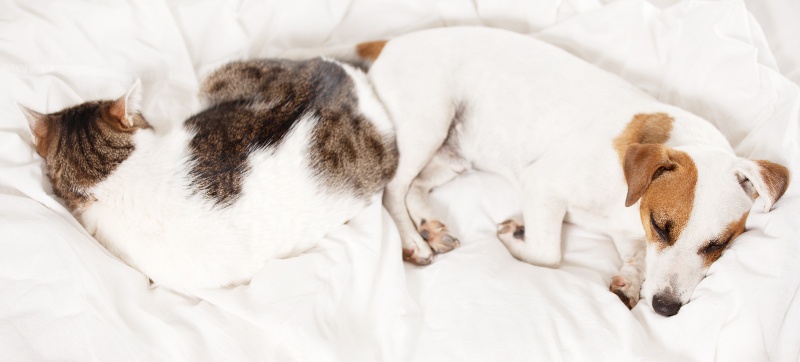
The Pet InfoRx® is made possible, in part, through our partnership with AlignCare®.


© Preventive Vet. All rights reserved. PreventiveVet.com
